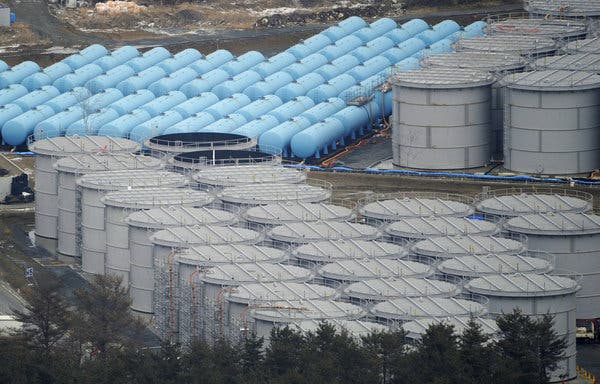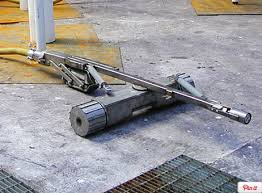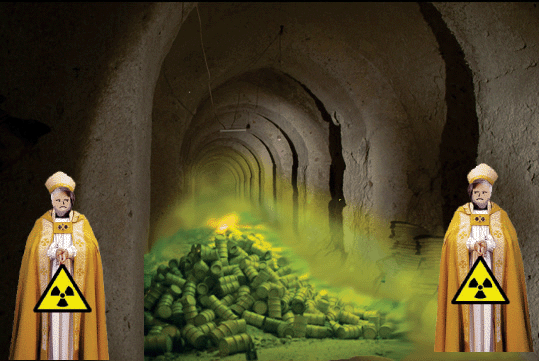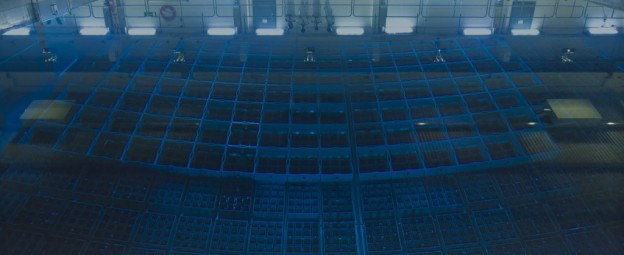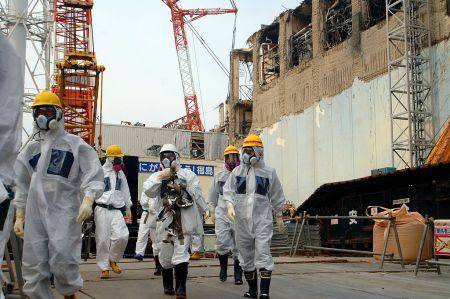More than 60,000 tons of highly radioactive spent nuclear fuel is stored on the shores of four of the five Great Lakes at the Border between United States and Canada — in some cases, mere yards from the waterline — in still-growing stockpiles…It remains on the shorelines because there’s still nowhere else to put it…
The nuclear power industry and its federal regulator, the U.S. Nuclear Regulatory Commission, point to spent nuclear fuel’s safe on-site storage over decades. But the remote possibility of a worst-case scenario release — from a natural disaster, a major accident, or an act of terrorism — could cause unthinkable consequences for the Great Lakes region. Scientific research has shown a radioactive cloud from a spent fuel pool fire would span hundreds of miles, and force the evacuation of millions of residents in Detroit, Chicago, Cleveland, Toronto or other population centers, depending on where the accident occurred and wind patterns.
For five years, Michigan residents, lawmakers, environmental groups and others around the Midwest have, loudly and nearly unanimously, opposed a planned Canadian underground repository for low-to-medium radioactive waste at Kincardine, Ontario, near the shores of Lake Huron. Meanwhile, spent nuclear fuel, vastly more radioactive, sits not far from the shores of four Great Lakes — Michigan, Huron, Erie and Ontario — at 15 currently operating or former nuclear power plant sites on the U.S. side. In Michigan, that includes Fermi 2; the Donald C. Cook nuclear plant in Berrien County; the Palisades nuclear plant in Van Buren County, and the former Big Rock Point nuclear plant in Charlevoix County, which ceased operation in 1997 and where now only casks of spent nuclear fuel remain.
Neither the U.S. nor the Canadian government has constructed a central collection site for the spent nuclear fuel. It’s not just a problem in the Great Lakes region — more than 88,000 tons of spent nuclear fuel, an amount that is rising, is stored at 121 U.S. locations across 39 states.
Spent nuclear fuel isn’t only radioactive, it continues to generate heat. It requires storage in pools with circulating water for typically five years before it can be moved into so-called dry-cask storage — concrete-and-steel obelisks where spent fuel rods receive continued cooling by circulating air.In practice, however, because of the high costs associated with transferring waste from wet pools to dry casks, nuclear plants have kept decades worth of spent fuel in wet storage. Plant officials instead “re-rack” the pools, reconfiguring them to add more and more spent fuel, well beyond the capacities for which the pools were originally designed.
Only in recent years have nuclear plants stepped up the transition to dry cask storage because there’s no room left in the wet pools. Still, about two-thirds of on-site spent nuclear fuel remains in wet pools in the U.S….That’s a safety concern, critics contend. A catastrophe or act of terrorism that drains a spent fuel pool could cause rising temperatures that could eventually cause zirconium cladding — special brackets that hold the spent fuel rods in bundles — to catch fire. Such a disaster could be worse than a meltdown in a nuclear reactor, as spent nuclear fuel is typically stored with nowhere near the fortified containment of a reactor core.
At Fukushima…what almost happened — at the plant’s Unit 4 spent-fuel pool that gives nuclear watchdogs nightmares. A hydrogen explosion four days into the disaster left the building housing the Unit 4 spent-fuel pool in ruins. The pool was seven stories up in a crumbling, inaccessible building. It “was so radioactive, you couldn’t put people up there,” von Hippel said. “For about a month after Fukushima, people didn’t know how much water was in the pool. They were shooting water up there haphazardly with a hose, trying to drop it by helicopter.” Two weeks after the earthquake and tsunami, the Japanese Atomic Energy Commission secretly conducted a worst-case scenario study of the ongoing disaster. The biggest fear that emerged: that a self-sustaining fire would start in the Unit 4 spent fuel pool, spreading to the nearby, damaged reactors. That, they found, would release radiation requiring evacuations as far away as 150 miles, to the outskirts of Tokyo and its more than 13.4 million residents. “That was the devil’s scenario that was on my mind,” Chief Cabinet Secretary Yukio Edano said during a special commission’s 2014 investigation of the accident.“Common sense dictated that, if that came to pass, then it was the end of Tokyo.” What kept the spent fuel rods covered with water in Unit 4 was a miraculous twist of fate: The explosion had jarred open a gate that typically separated the Unit 4 spent fuel pool from an adjacent reactor pool. “Leakage through the gate seals was essential for keeping the fuel in the Unit 4 pool covered with water,” a 2016 report on the Fukushima accident by the U.S. National Academies of Sciences, Engineering and Medicine concluded. “Had there been no water in the reactor well, there could well have been severe damage to the stored fuel and substantial releases of radioactive material to the environment.”
The U.S. nuclear industry sees Fukushima differently — in some ways as a success story. “At Fukushima, you not only had a tsunami, you blew up the buildings … and you still did not drain the pool,” said Rod McCullum, senior director for fuel and decommissioning at the Nuclear Energy Institute, the trade association for nuclear utilities in the U.S. “Those pools and those casks withstood explosions and earthquakes and tsunamis, all on the same day.” A scenario where a fire can occur by the draining of water from a spent-fuel pool “has never been demonstrated,” McCullum said. He noted safety measures added in the U.S. since Fukushima include the ability to provide extra pumps and water supplies, in minutes or hours, should a spent fuel pool become breached and lose water — even if the disaster required that the resources be brought in by air from farther away….
Because nuclear power is much more widely used in Canada — the province of Ontario alone has 20 nuclear reactors at three plants — it also generates much more nuclear waste. In Ontario, nearly 52,000 tons of spent nuclear fuel is stored on-site at nuclear plants along Lakes Huron and Ontario.“There’s a huge amount of high-level, radioactive waste stored right along the water,” said Edwards, the president of the nonprofit Canadian Coalition for Nuclear Responsibility Like the U.S., Canada is seeking a long-term storage solution that will involve a central underground repository. Unlike the U.S., the Canadian government is seeking willing hosts, promising jobs and economic activity. …Even if a central repository is one day approved, another complication arises — how to get two generations of the most dangerous industrial waste man has ever created from sites all over the country to one point….
Germany, in the 1980s, tried using an abandoned salt and potash mine to store barrels of nuclear waste over 30 years, the Asse II mine. It’s now prompting a cleanup that may take 30 years and cost nearly $12 billion U.S. dollars. The government has disputed the contention of workers at the mine that they were exposed to excessive levels of radiation, causing an unusual number of cancers….Nuclear power is projected to drop as a percentage of the world’s power generation mix from 10 percent in 2017 to just 5.6 percent by 2050, a report issued by the International Atomic Energy Agency this summer found…
If central repository solutions aren’t found, within years, the re-licensing of some early dry-cask storage facilities will come into play, as they meet a lifespan they were never expected to reach. “The age of nuclear power is winding down, but the age of nuclear waste is just beginning,” Edwards said.
Excerpts from Keith Matheny, 60,000 tons of dangerous radioactive waste sits on Great Lakes shores, Detroit Free Press, Oct. 19, 2018




